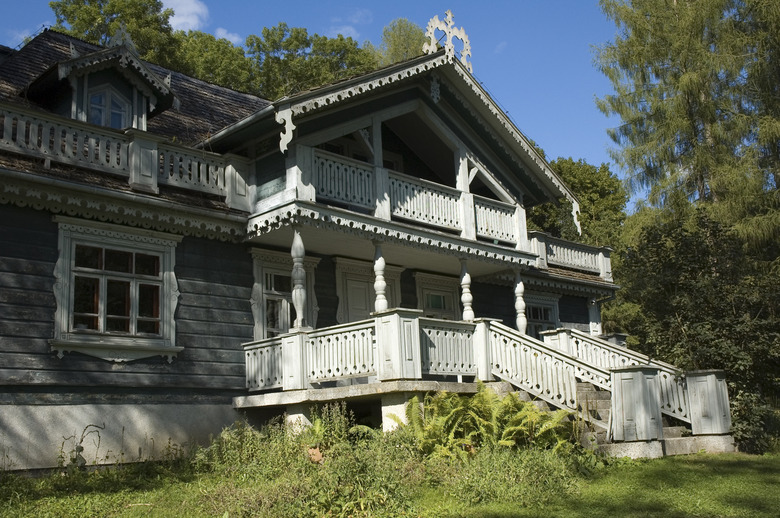What Do Cracking Noises Mean In Your House?
While older, somewhat larger houses tend to carry with them through the years certain "personality traits," such as creaky doors, floorboards and stairwells, this phenomenon is not exclusive to older homes alone. Even newer homes make certain sounds from time to time, and while some of these sounds are mundane, and a function of the home's structural environment, others may indicate a problem in need of repair or adjustment.
Thermal Expansion
Thermal Expansion
One of the main causes of cracking and popping noises that seem to occur randomly in a house, mainly deep within the walls, floors, and ceilings, is known as thermal expansion. As the sun's heat, or even internal heaters cause the structural members of a house to grow warmer, the material itself begins to expand, primarily lengthwise, causing strain on the joints and fasteners, producing all sorts of sounds, especially in wood. With wood planks, the grain runs lengthwise, and is coincidentally the primary direction of the expansion. As the building begins to cool back down, the reverse happens, sometimes causing just as much noise as the long members begin to contract back down to their original size and the joints begin to tighten back up.
This same phenomenon is responsible for many other inconsistencies house-wide, particularly around door jambs and window frames. Sometimes the expansion is so great, or the functional clearance around a window or doorway so small, that all reasonable function is lost during certain times of the day, particularly in the summer. Careful sanding can rectify this, but you must be very careful not to remove too much material, making the gap too big. This factor varies greatly from one material to another, so a quick look at a chart, such as InspectAPedia's Table of Coefficient of Expansion of Building Materials, can be a helpful way to understand how much expansion per degree Fahrenheit is happening. Remember, when the temperature is on the other end of the spectrum, the reverse will happen, sometimes causing an over-sanded door to become impossible to close completely, as the latch will no longer engage when the material contracts fully!
Settling
Settling
Another primary and fairly-mundane cause of random noises within a home is settling. For an often-lengthy period, a house will creak and pop from time to time due solely to its own weight causing the soil beneath the house to compact, thus allowing sections, or even the entire house, to sink slowly and minutely into the ground. This can cause all kinds of inconsistent shifting and racking within the structural framing, door openings, and windows. The magnitude and frequency of this type of movement can vary widely, depending on local soil and weather patterns.
Loose Treads or Poorly Fastened Subflooring
Loose Treads or Poorly Fastened Subflooring
Perhaps the most annoying of all regular noises a house can make is the creaky floorboard. Whether it be on the one bum tread on a staircase, or on a certain region of the floor, the cause is basically the same: loose or improper fasteners trying to hold down warped wood to the floor joists. The easiest way to combat such irritations along stairwells is to remove the tread in question, squeeze an even bead of construction adhesive along the top of the joists or stair stringers, then reattach the tread in as solid a manner as is possible using wood screws instead of nails to tighten them down. The same basic technique will stop mid-floor creaks, but the top of the subflooring must be exposed first. Cut out a square surrounding the problem zone from joist center to joist center, or remove an entire 4-foot by 8-foot sheet of subflooring. Place adhesive on the joists, then tightly refasten the plywood with screws and replace the floor covering.
